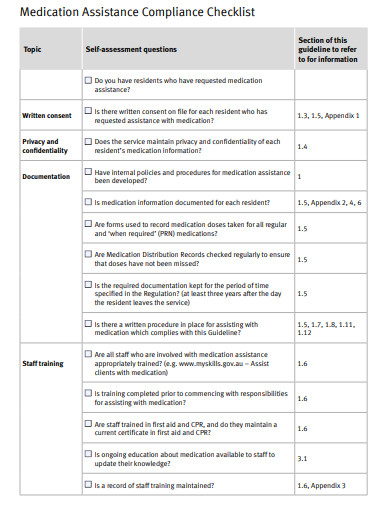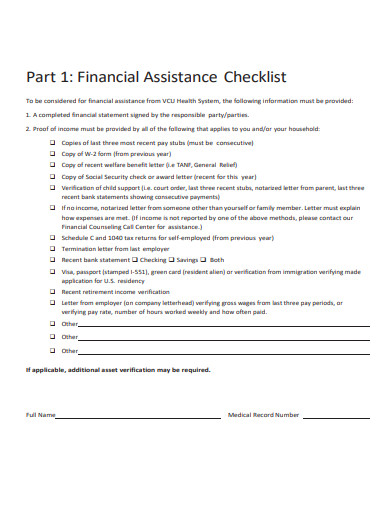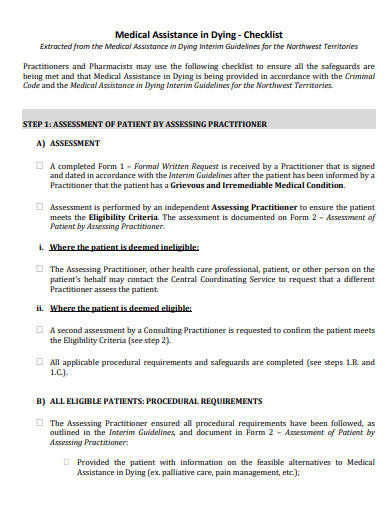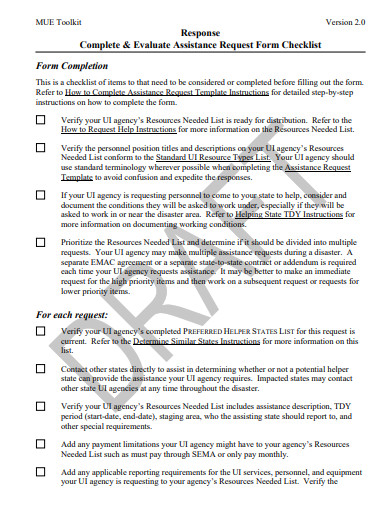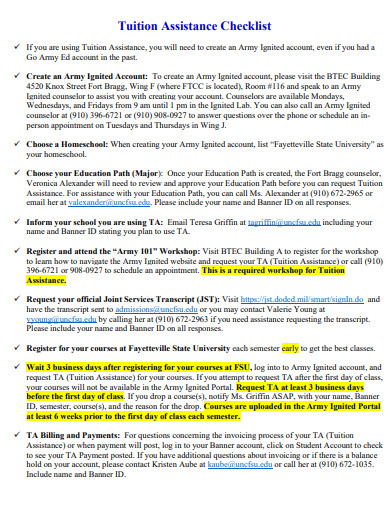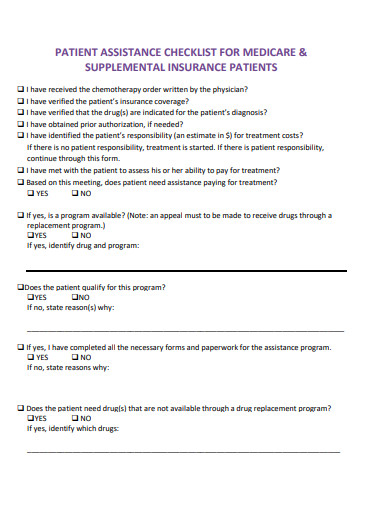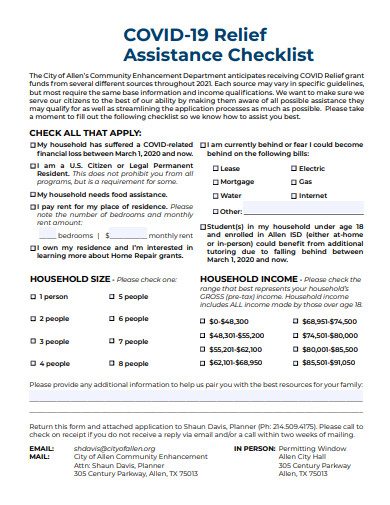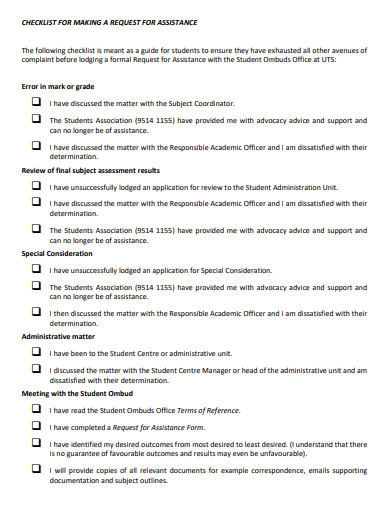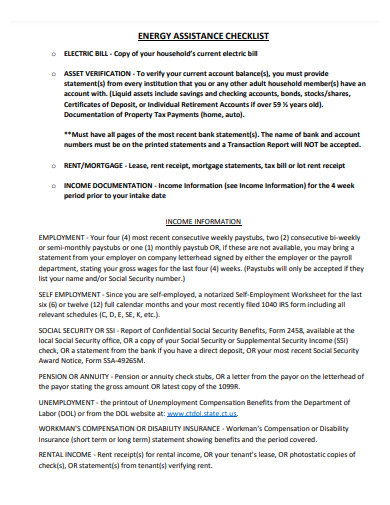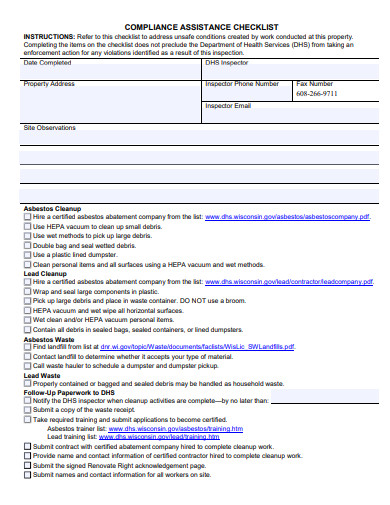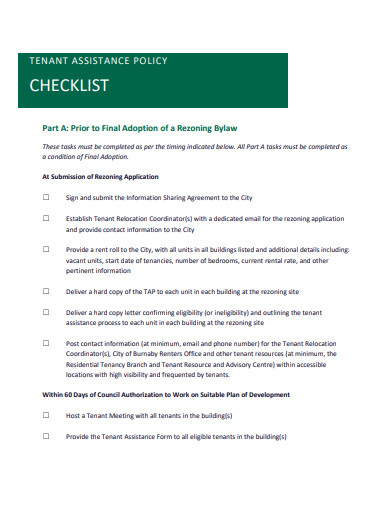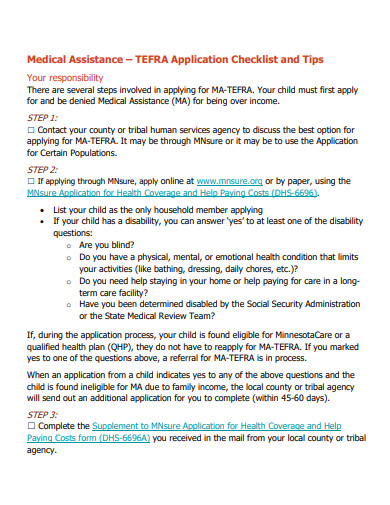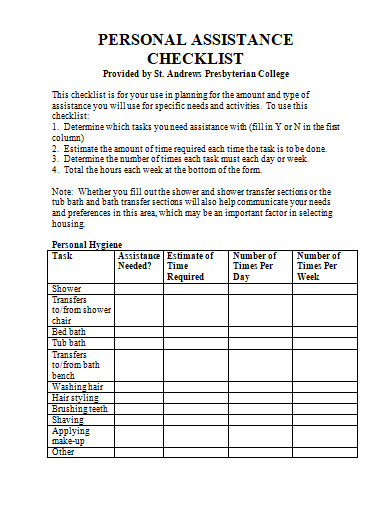In a world brimming with countless tasks and responsibilities, our comprehensive Assistance Checklist emerges as a quintessential guide, fostering productivity and ensuring nothing falls through the cracks. Seamlessly blending utility with convenience, this checklist is an indispensable tool for individuals and businesses alike, aiming to streamline operations and enhance efficiency. By incorporating this resource, users unlock a structured approach to program management, paving the way for optimal outcomes and a harmonious balance between personal and professional endeavors.
21+ Assistance Checklist Samples
1. Sample Checklist Template

2. Basic Checklist Template
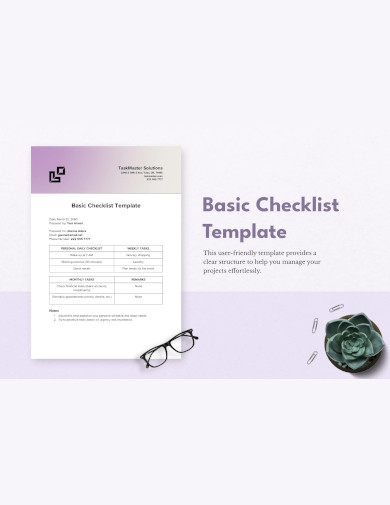
3. Formal Checklist Template
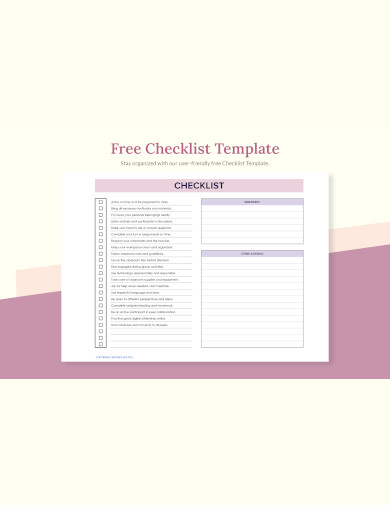
4. Printable Checklist Template
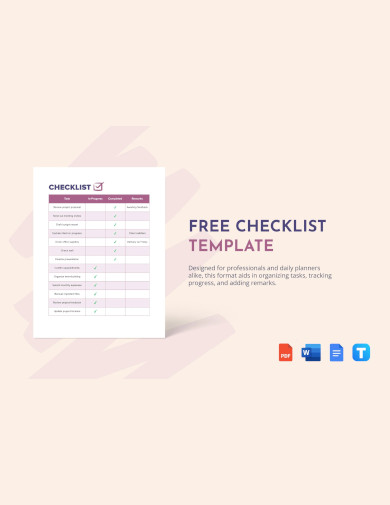
5. Medication Assistance Compliance Checklist Template
6. International Technical Assistance Visa Checklist Template
What is an Assistance Checklist?
An Assistance Checklist is a systematic tool designed to identify, organize, and prioritize the needs of an individual or a group requiring support or aid. It serves as a comprehensive guide for both those seeking help and those providing it, ensuring that all necessary steps are taken, and resources are allocated efficiently to address the identified needs.
The checklist is especially valuable in various settings such as healthcare, education, social services, and emergency response. In healthcare, for instance, it might help medical professionals and caregivers identify the specific needs of patients and ensure that appropriate care and support are provided. In education, teachers and support staff might use an Assistance Checklist to identify the learning and developmental needs of students and arrange the necessary resources and interventions.
One of the fundamental components of an Assistance Checklist is the clear identification of needs. This involves assessing the individual or group’s situation to understand both their immediate and long-term needs. This academic assessment should be thorough and considerate of the unique characteristics and circumstances of those involved, ensuring that the support provided is tailored and effective.
Once the needs are identified, the next step is to prioritize them. This involves determining which needs are most urgent and which can be addressed over a more extended period. This prioritization is crucial for effective resource allocation, ensuring that the most critical issues are addressed first and that support is provided in a timely manner.
The Assistance Checklist should also include a comprehensive list of available resources and support services. These can range from internal resources within an organization to external resources in the community or wider region. Identifying these resources is essential for connecting individuals or groups with the appropriate services and ensuring that their needs are met.
Another vital component is establishing points of contact. This involves identifying specific individuals, agencies, or organizations that can provide the necessary assistance and support. Having accurate and up-to-date contact information is crucial for facilitating communication and coordination among all parties involved.
Developing specific action steps is also a key aspect of the Assistance Checklist. These steps should be clear, concise, and tailored to the individual or group’s needs and context. They might include arranging appointments, completing process documentation, securing approvals, and following up to ensure that the assistance provided is effective.
Key Components of an Assistance Checklist
An Assistance Checklist can be a useful tool for identifying and organizing the help a person or group might need in various circumstances. Here are some key components to include in such a checklist:
- Clear Objectives: Every assistance checklist should start with clear objectives. These define what the checklist aims to achieve and serve as a guide for the tasks included.
- Task Breakdown: The core of the checklist consists of a breakdown of tasks that are organized in a logical work order. Each task should be concise yet detailed enough to avoid ambiguity.
- Timeframes: Allocating timeframes for each task helps in managing time effectively and ensures that the sample project stays on schedule.
- Responsibility Assignment: Clearly stating who is responsible for each task fosters accountability and ensures that tasks are not overlooked.
Benefits of Using Assistance Checklists
Using Assistance Checklists can offer several benefits in various settings. Here are some of the benefits:
- Enhanced Productivity: By providing a clear sample roadmap of what needs to be done, assistance checklists help in eliminating uncertainties and enhancing productivity.
- Reduction of Errors: Checklists act as a last-minute reference, ensuring that no task is forgotten, thereby significantly reducing the chances of errors.
- Effective Communication: Assistance checklists facilitate communication within a team by clearly defining tasks, responsibilities, and timeline sample.
- Stress Reduction: Knowing exactly what needs to be done and when gives individuals a sense of control, thereby reducing stress and increasing job satisfaction.
7. Sample Financial Assistance Checklist Template
8. Sample Medical Assistance Checklist Template
9. Sample Mortgage Assistance Checklist Template
10. Sample Web Tuition Assistance Checklist Template
11. Sample Draft Assistance Checklist Template
12. Sample Tuition Assistance Checklist Template
13. Sample Patient Assistance Checklist Template
14. Sample Relief Assistance Checklist Template
15. Sample Request For Assistance Checklist Template
16. Sample Energy Assistance Checklist Template
17. Sample Compliance Assistance Checklist Template
18. Sample Tenant Assistance Policy Checklist Template
19. Sample Motor Vehicle Accident Assistance Checklist Template
20. Sample Medical Assistance Application Checklist Template
21. Sample Emergency Rent Assistance Checklist Template
22. Sample Personal Assistance Checklist Template
How to Customize Assistance Checklist?
- Define Purpose: Clearly outline what you aim to achieve with the checklist. Identify whether it’s for personal use, aiding others, or managing projects.
- List Tasks: Write down all the tasks or items that need to be included, ensuring each is clear and actionable.
- Categorize and Prioritize: Organize tasks into relevant categories and prioritize them based on importance or deadlines.
- Allocate Resources: If applicable, assign tasks to individuals and list any necessary tools or resources needed for each task.
- Set Milestones: Identify key milestones and deadlines for tracking progress.
- Review and Adjust: Finally, review the checklist, make necessary adjustments, and ensure it’s user-friendly and accessible to all relevant users.
How do you Create an Assistance Checklist?
Creating an effective assistance checklist can streamline any task or project, ensuring that no step is missed and every detail is covered. Follow these simple five steps to create a comprehensive assistance checklist, tailored to your unique needs.
Step 1: Define Your Objectives
Before you start jotting down tasks, clearly define what you hope to achieve with your assistance checklist. Whether you are planning an sample event, managing a project, or organizing daily tasks, understanding your objectives will guide the formation of your checklist. For example, if your aim is to organize a successful conference, your objectives might include securing a venue, arranging speakers, and promoting the event.
Step 2: Break Down Tasks into Manageable Pieces
Once your objectives are clear, start breaking them down into smaller, manageable tasks. For instance, if one of your objectives is to promote a conference, tasks might include creating promotional material, identifying sample marketing channels, and scheduling social media posts. Breaking down tasks ensures that each action is manageable and nothing is overlooked.
Step 3: Prioritize and Sequence
After listing all tasks, prioritize them according to their importance and impact on your objectives. Decide which tasks are critical and which can be handled later. Arrange the tasks in a logical sequence, considering dependencies between them. For instance, you can’t promote an event without creating promotional material first. Prioritizing and sequencing help in optimizing your workflow and managing time effectively.
Step 4: Assign Responsibilities and Deadlines
Identify who will be responsible for each task, ensuring a balanced distribution of workload. Assigning responsibilities creates accountability and ensures that every task has a dedicated owner. Additionally, set realistic deadlines for each task, considering the overall outline timeline of your project. For example, if you are planning a conference, you might assign the task of securing a venue to a team member with relevant experience and set a deadline well in advance of the event.
Step 5: Review and Adjust
Finally, regularly review your checklist to monitor progress and make any necessary adjustments. As the project evolves, some tasks may become irrelevant, while others might emerge. For instance, if the conference venue has in-house promotion, you might adjust your marketing tasks accordingly. Regularly reviewing and adjusting your checklist ensures it remains a relevant and effective tool throughout your project.
In Conclusion, An assistance checklist is more than just a to-do list; it’s a strategic tool that, when employed effectively, can significantly enhance the workflow and output of a project. By breaking down tasks, assigning responsibility, and providing a clear roadmap, assistance checklists are indispensable in various sectors, helping individuals and teams achieve their objectives efficiently.
Related Posts
FREE 18+ Complaint Checklist Samples in MS Word | Google Sheets | PDF
FREE 18+ Internship Checklist Samples in MS Word | Google Docs | PDF
FREE 18+ Statement Checklist Samples in MS Word | Google Sheets | PDF
FREE 20+ Voluntary Checklist Samples in MS Word | Google Sheets | PDF
FREE 18+ Summary Checklist Samples in MS Word | Google Sheets | PDF
FREE 14+ Sponsorship Checklist Samples in MS Word | MS Excel | PDF
FREE 18+ Conference Checklist Samples in MS Word | Google Sheets | PDF
FREE 17+ Lesson Checklist Samples in MS Word | Google Sheets | PDF
FREE 18+ Progress Checklist Samples in MS Word | Google Docs | PDF
FREE 18+ Enrollment Checklist Samples in MS Word | Google Docs | PDF
FREE 18+ Graduation Checklist Samples in MS Word | Google Sheets | PDF
FREE 15+ Consent Checklist Samples in MS Word | Google Sheets | PDF
FREE 18+ Review Checklist Samples in MS Word | Apple Pages | PDF
FREE 18+ Submission Checklist Samples in MS Word | Google Docs | PDF
FREE 18+ Request Checklist Samples in MS Word | MS Excel | PDF

